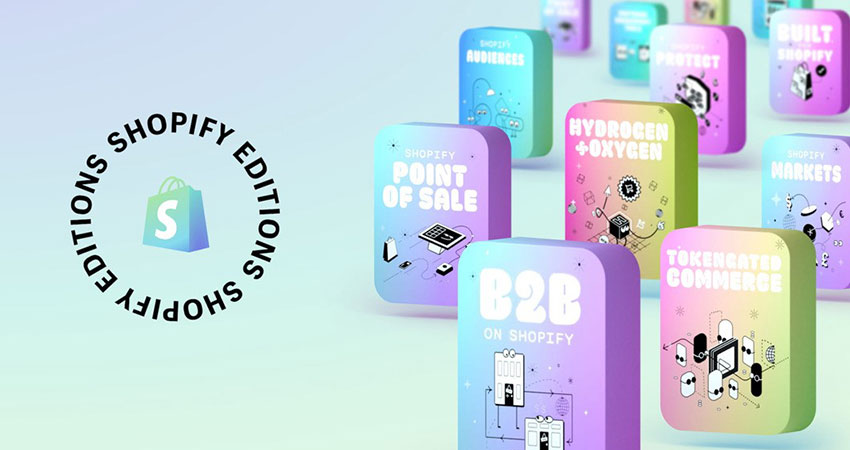Shopify is pursuing a new avenue of attack against Amazon, launching 100 new or updated apps that include tools for merchants to drive B2B sales while also linking up with Twitter to turn on social commerce, in an effort to boost slowing growth of its DTC ecommerce revenue.
The B2B offering gives merchants the option of selling both DTC and to wholesale customers from the same store in Shopify Plus, or customizing a separate “expansion store” for B2B. It allows merchants to create company profiles, price lists, payment terms and customer accounts.
“We’ve long heard from our merchants that they’d like to be able to sell wholesale and direct from one online store,” said Shopify merchant success manager Shakir Gill in a blog post. “To meet this growing demand, we’ve worked to build the most foundational and powerful features B2B merchants need directly into the heart of Shopify.”
The Twitter integration lets merchants connect their profile with their Shopify store to make items shoppable through their feed, including a carousel feature that can rotate up to 50 different products. A separate marketplace kit includes API hooks into Spotify, Google, Facebook, TikTok and others, while Linkpop creates a shoppable landing page connected to social accounts, webstores and media like music and videos.
Another new app, Shopify Markets, enables merchants to tap into cross-border ecommerce through creation of localized currencies, languages, domain names and payment methods.
Shopify president Harley Finkelstein told Reuters that B2B represents “billions in untapped revenue” for Shopify to take advantage of. He also said he’s sensing a shift from DTC to “connect-to-consumer” facilitated by commerce-laden interactions between brands/retailers and shoppers via social media over smartphones.
“This is the next phase of retail,” Finkelstein told Reuters. “In many ways, shopping has become a vote with your wallet to support that brand … And that’s what I think connect-to-consumer is all about.”
After Q1 gains of 47% and 110%, respectively, in 2020 and 2021, Shopify saw its revenue growth slack to 22% in the first quarter of this year, leading to a stock selloff and lots of questioning from industry observers.

